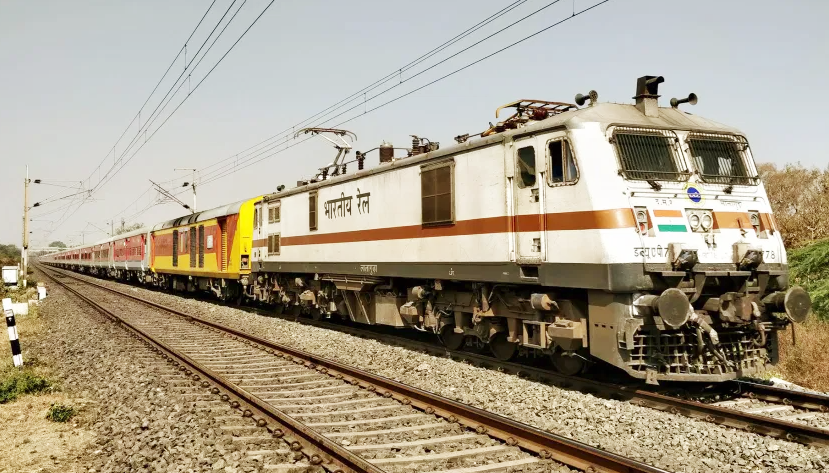Indian Railways reform: When the solution is the problem
With the IRMS coming in place, a decisive step towards dismantling the superstructure of the rail bureaucracy has been initiated
Srinand Jha
Amidst the heat and dust of the ongoing electioneering of the state Assembly elections, a critical rail reform plan was pushed through this month. A Union government notification merged the eight existing Class-A services into the single Indian Railways Management Service (IRMS).
With the IRMS coming in place, a decisive step towards dismantling the superstructure of the rail bureaucracy has been initiated. Engineering Service officers will no longer retain their preponderance and elevated status in the bureaucratic hierarchy.
As an outcome, specialised tasks such as track building or locomotive manufacture and upkeep are likely to get outsourced in coming years. In short, the old template for conducting rail business has been discarded, while there is uncertainty about what the future holds.
The situation – understandably so – has caused serious heartburn and apprehensions in the minds of the existing Class-A category of rail officers – estimated cadre strength of 4500 personnel.
India’s 185-year-old public transporter – the last of the government monopolies – had so far been governed by eight different and specialised services such as the Indian Railways Service of Mechanical Engineers (IRSME) or the Indian Railway Service of Signal Engineers (IRSSE).
So far, there had been three entry points on recruitments: Through the general examinations conducted by the Union Public Services Commission (UPSC); through the Combined Engineering Services Examinations (also conducted by the UPSC) and through direct recruitments conducted by the now-defunct Indian Railway Institute of Mechanical and Electrical Engineering (IRIMEE) at Jamalpur.
According to the February 9 notification, all recruitments will now be done through the single UPSC examination. The long and short of it all is that generalists, or managers, will now replace the specialists as decision-makers.
The official version is that the measure has been initiated to get rid of silos and to end the culture of “departmentalism”. But there are, as is the case, the “Roshomon factor” playing out here, with varying and entirely different versions to the situation.
Beast of burden
Until the Covid pandemic struck last year, the Indian Railways – the world’s fourth-largest network – had continued to shoulder the humongous task of operating 22,593 trains (9141 freight and 13,452 passenger) daily to transport 203.88 million tonnes of freight and 24 million passengers.
For all its faults or inadequacies, the Indian Railways have served the significant purpose of integrating the nation by way of constructing branch lines in the country’s remote areas.
Passenger fares have also been kept low, which has enabled carpenters or masons from Darbhanga, for instance, to frequently travel down to Kerala or Karnataka for seasonal work. With a network of nine production units and 80 workshops, manufacturing and upkeep of rolling stock and infrastructure building had been indigenously done.
Therefore, the question is: Where was the need to tinker with a system that had stood the test of time for more than 150 years? “IRMS is a badly thought out, and an ill-advised move,” former Railway Board Member R R Jaruhar said.
The monster of departmentalism?
Various committees of experts, including the Rakesh Mohan committee of the early 1990s, had recommended the unbundling of rail services and measures to eliminate the work culture that promoted functioning in silos.
But the question has remained: Is departmentalism being taken as a bigger monster than what is being imagined? Past records do not show that silo functioning has impeded decision making.
For instance, the radical “Uni-Gauge” policy to convert all Meter Gauge and Narrow Gauge into Broad Gauge lines was adopted and executed in the early 1980s despite serious inter- departmental rivalries. In the same period, the steam locomotives were abandoned without much resistance.
During UPA-1, a decision on increasing axle loads on trains was taken, despite stiff resistance from the engineering departments. More recently, the Narendra Modi government carried through the decision on the production of electric locomotives at the Varanasi based facility, then called the Diesel Locomotive Works.
Former Railway Board member Subodh Jain says: “The Indian Railways does confront serious structural issues, but departmentalism ought to have been the least of the worries of policymakers.”
The existential crisis
The troubles of the Indian Railways are many. In past years, its Operating Ratio (OR-paisa earned against each rupee earned) has hovered around 98 per cent, with the Comptroller and Auditor General ticking off the transporter for having “manipulated statistics” to “artificially keep” the OR within 100 per cent.
For each rupee earned, the Indian Railways are estimated to spend 63 paise towards salary, pensions and allowances and 15 paise as fuel expenses, leaving precious little for modernisation and technological upgrade. Lines are choked, the rolling stock remains antiquated and technological upgrade plans have remained on the drawing board.
While the Indian Railways in recent years has been spending more on capital upgrade, the transporter’s loan burden has also been correspondingly increased. Until the Covid situation came to its rescue (when the Indian Railways curtailed passenger services), the transporter continued to suffer annual losses of an estimated Rs 30,000 crore on passenger operations.
Solution as the problem
Radical problems do call for radical solutions. Expert committees have even highlighted the need for the transporter to exit the rail business and focus on the singular task of operating trains. But the creation of the IRMS, at the expense of dismantling the institutional mechanism of the engineering services, does appear to bring in newer and bigger challenges.
In the absence of experienced rail engineers, the transporter, in coming years, could find itself obliged to accept the technology or rolling stock offered by private parties at rates to be decided by them.
“A fait accompli” situation of such sort can hardly be considered ideal for the Indian Railways,” former general manager A K Jain said.
#Srinand_Jha is a senior journalist based in Delhi
#IRMS #IndianRailways


